This post contains photographs and construction tips for a killer craft I made: an autocidal gravid ovitrap. Pregnant females enter the trap, lay some eggs on or near the stagnant water within, then are prevented from exiting and die. Their progeny also die because a screen at water level prevents larvae from reaching the surface to obtain oxygen. When similar traps have been deployed they bring down mosquito levels substantially and thus are quickly becoming one of the main ways to prevent mosquito outbreaks and disease. Every homeowner should have six. They’d make wonderful gifts.
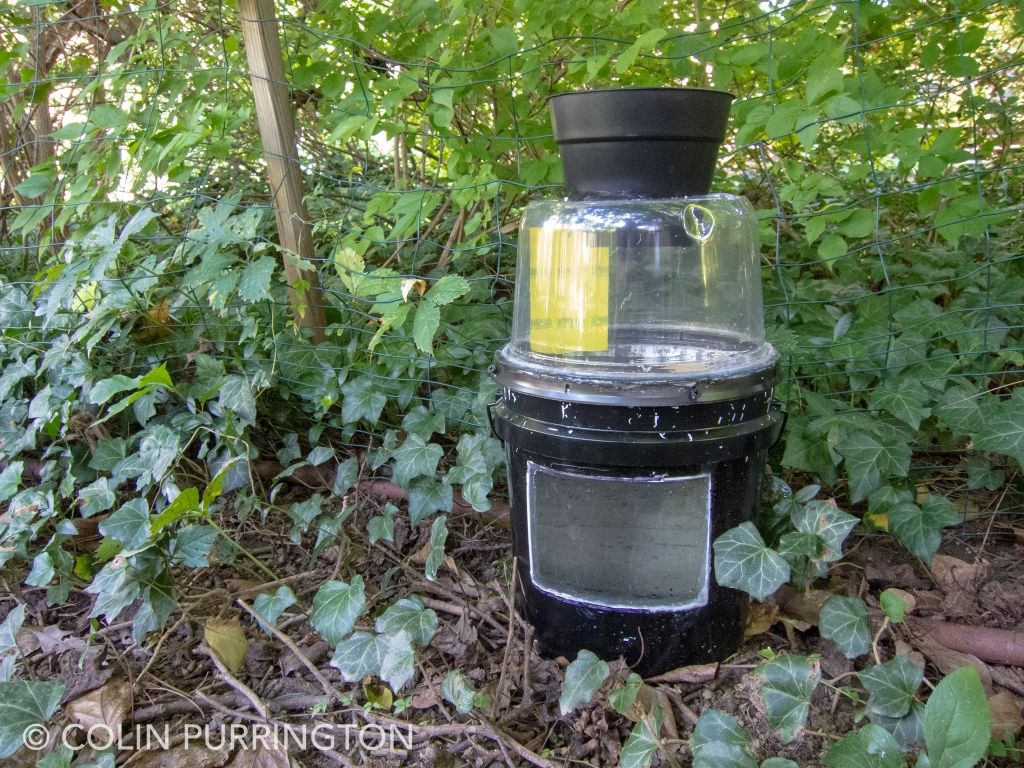
The design features a clear dome that helps trap the females when they are done ovipositing (they go for the light), plus a completely unneeded observation window so I can watch the larvae and pupae (fun for the whole family, plus good for demonstration purposes). It borrows general methodology from gravid Aedes traps (GATs) designed by Dr Scott Richie (James Cook University) and colleagues that recently made news on NPR (here’s an overview; here’s their paywalled journal article). I’ve designed mine to capture species that also lay egg rafts, so it’s not just a GAT. My design doesn’t use insecticide because I wanted the odor of developing larvae to be an attractant to other females (it is, by the way).
What you need
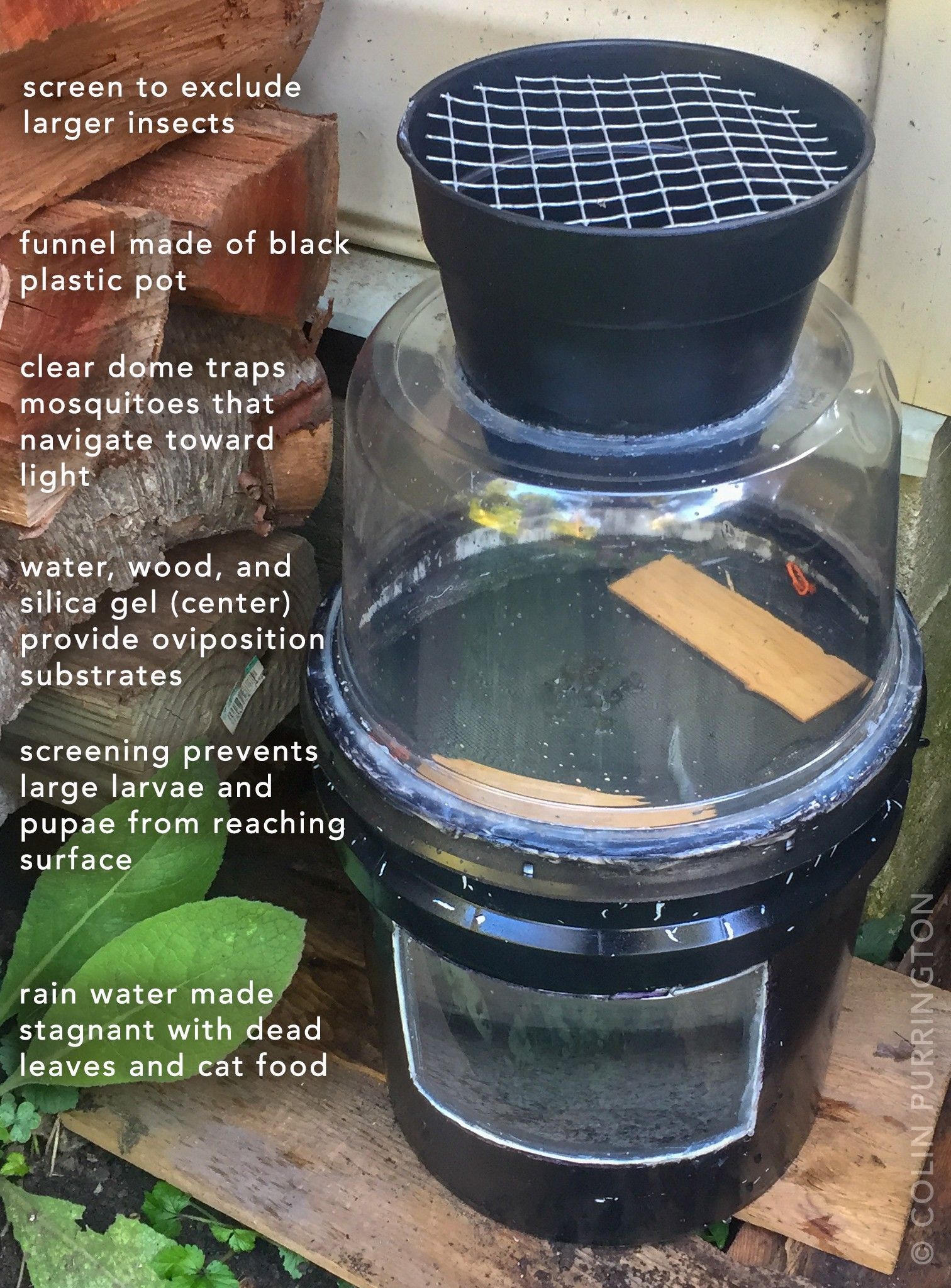 2-gallon bucket
2-gallon bucket- bucket lid
- 6″ plastic pot
- clear dome from cake store
- metal coat hanger
- plastic screening
- stapler
- 3 paperclips
- small neodymium magnet
- silicone adhesive glue
- duck tape
- hardware cloth
- 1-L soda bottle
- 1/4″ foam weatherstripping
- black spray paint
- Dremel tool with cutting bit
- drill with drill bit
- knife
- safety glasses (when Dremeling)
Construction photographs
If you’d like to see photographs larger just click on first image and navigate like a slide show. There are many ways to construct these so if you build one and it looks completely different, don’t worry. This is because if your device is the only stagnant water around, females will use it.
I’ve only just deployed it and it’s rather cold right now so I don’t have any victims yet. But I’m optimistic and am posting now with the hope that somebody will have suggestions on how to improve the design (I’m making more). One improvement I’m definitely going to make is to drop the funnel lower into the dome so it’s harder for females to accidentally fly straight up to escape. And pro-tip if you make the above: attach the lid to pail when spray painting to avoid unwanted buildup where they attach.
I’m also posting in the off chance that a biology teacher might take an interest. Having teams make these would be really fun and then they could deploy them in the woods near the school: bonus points for team that traps the most mosquitoes. It’s fun like the classic egg-drop lab in physics except useful. Students would then take their projects home where they’d continue to be useful. Would make for a great Girl Scout Gold Award / Eagle Scout project.
Other DIY designs
- Basic trap (Dr Van Eden’s)
- 4-month trap (Dr Van Eden’s). Here are photographs.
- Mosquito killing ovitrap (Instructables)
- Sock-based ovitraps (Instructables)
- How to make an ovitrap (Instructables)
- One-way mosquito ovitrap (Mosquitoes Without Borders)
Where to buy
If all of the above sounds like way too much work you can buy them: Biogents GAT Trap (my favorite), Catchmaster Ovi-Catch AGO, Dalen Skeet-O-Trap, Springstar AGO, and Ultimate Mosquito Traps.
Useful articles
Barrera, R., A.J. Mackay, and M. Amador. 2013. A novel autocidal ovitrap for the surveillance and control of Aedes aegypti. Journal of the American Mosquito Control Association, 29:293-296.
Maciel-de-Freitas R., R.C. Peres, F. Alves, M.B. Brandolini. 2008. Mosquito traps designed to capture Aedes aegypti (Diptera: Culicidae) females: preliminary comparison of Adultrap, MosquiTRAP and backpack aspirator efficiency in a dengue-endemic area of Brazil. Mem Inst Oswaldo Cruz. 103: 602-605.
Mackay, A.J., M. Amador, and R. Barrera. 2013. An improved autocidal gravid ovitrap for the control and surveillance of Aedes aegypti. Parasites and Vectors 6:225.
Maire, A. 1985. Effect of axenic larvae on the oviposition site selection by Aedes atropalpus. J. Am. Mosq. Control Assoc. 1:320-323.
Paz-Soldan et. al. 2016 Design and testing of novel lethal ovitrap to reduce populations of Aedes mosquitoes: community-based participatory research between industry, academia and communities in Peru and Thailand. PLoS One 11:8.

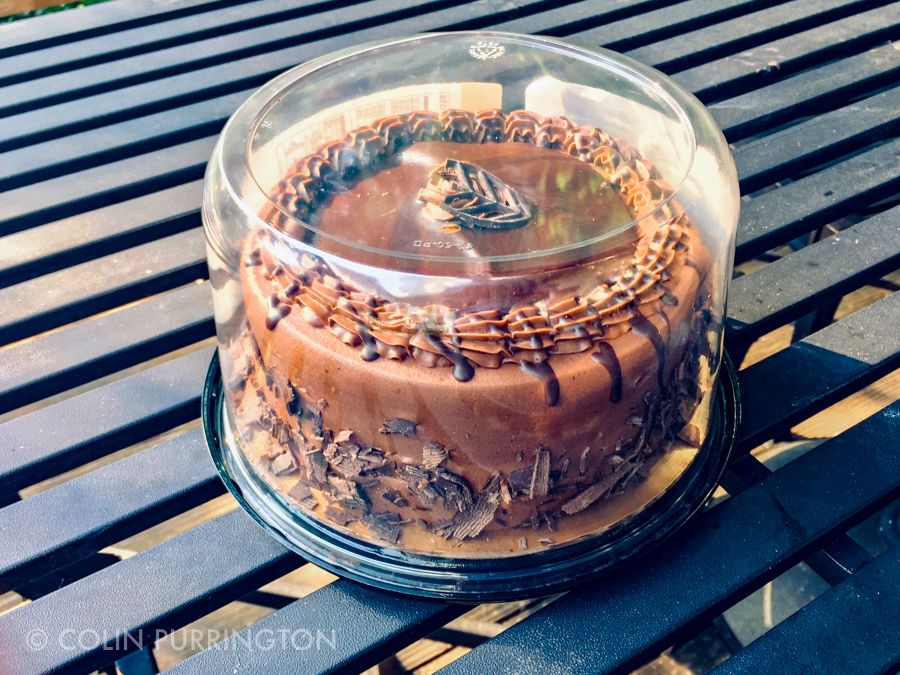
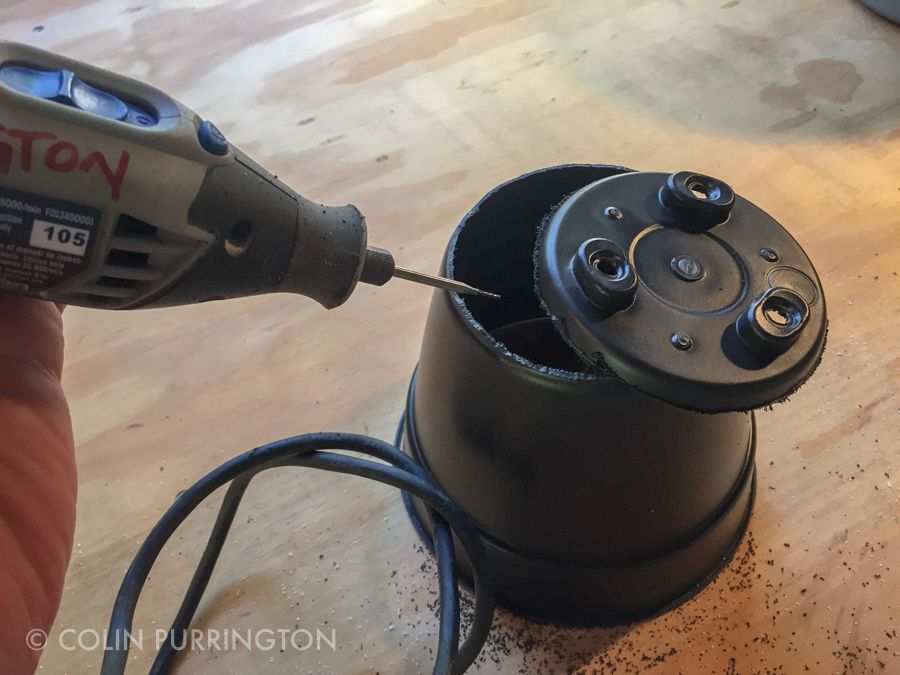
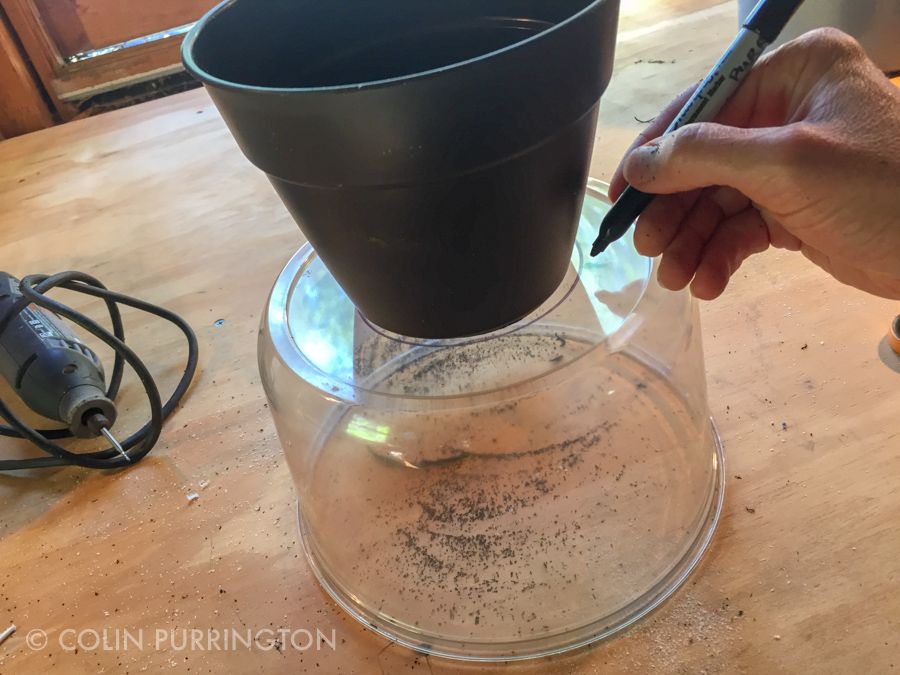


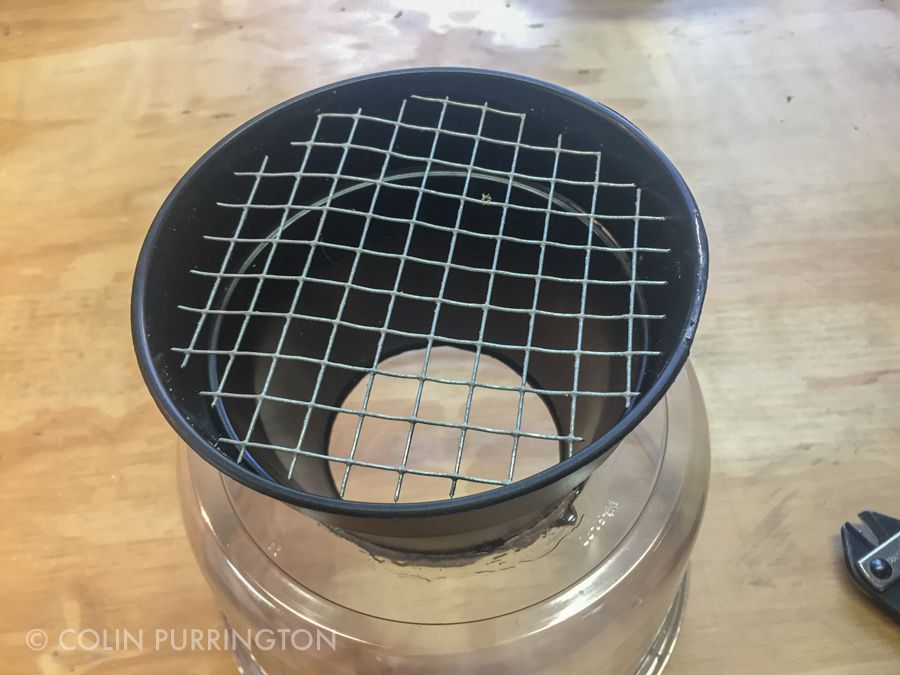
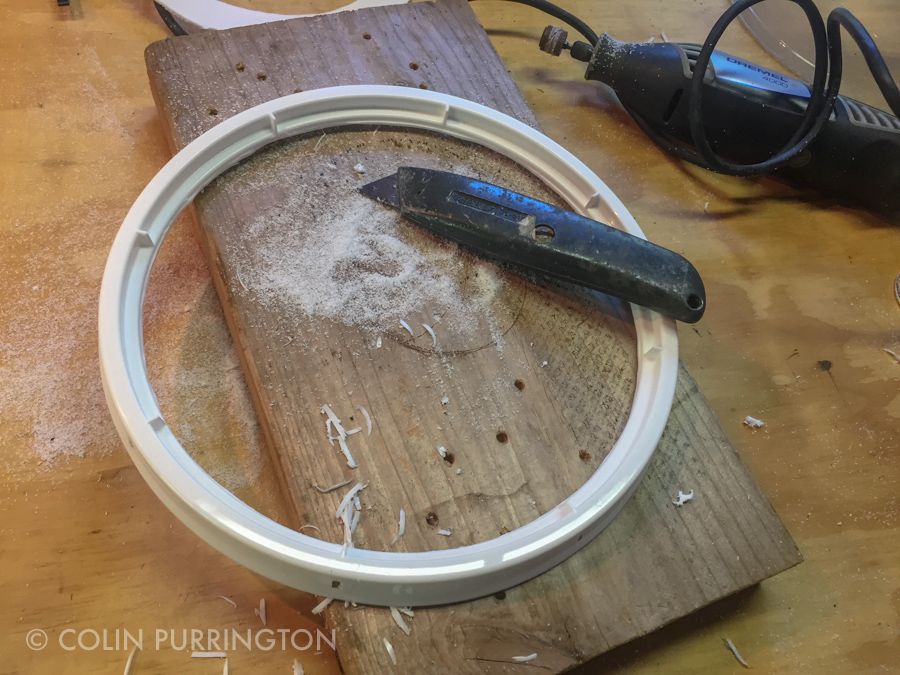
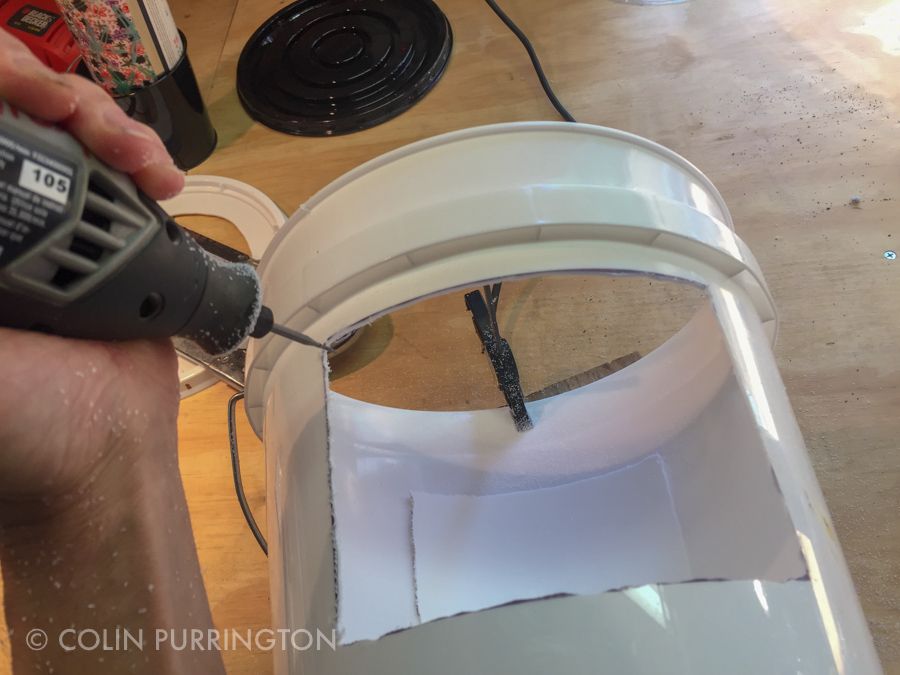
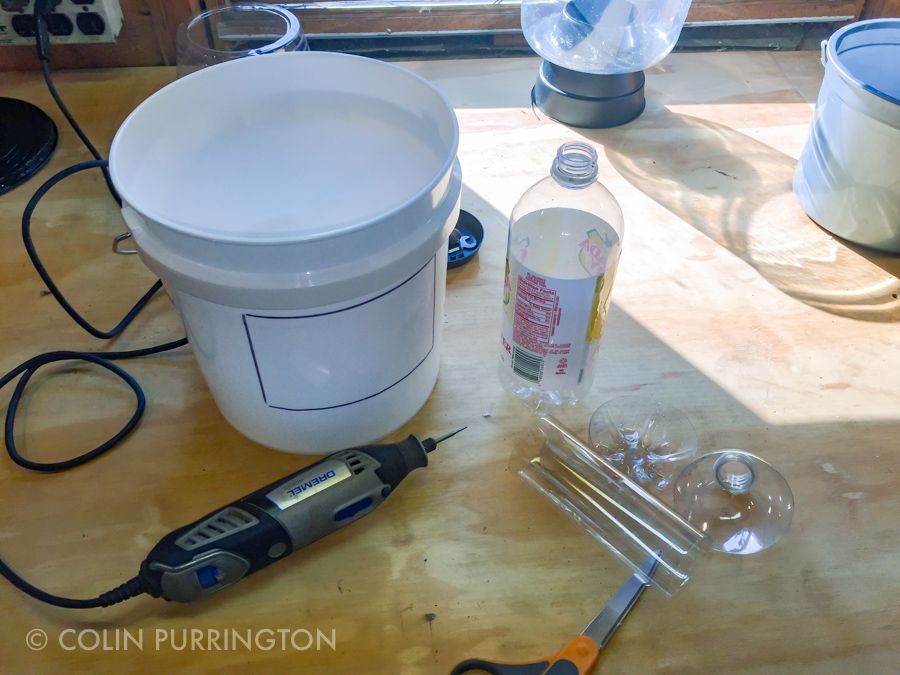
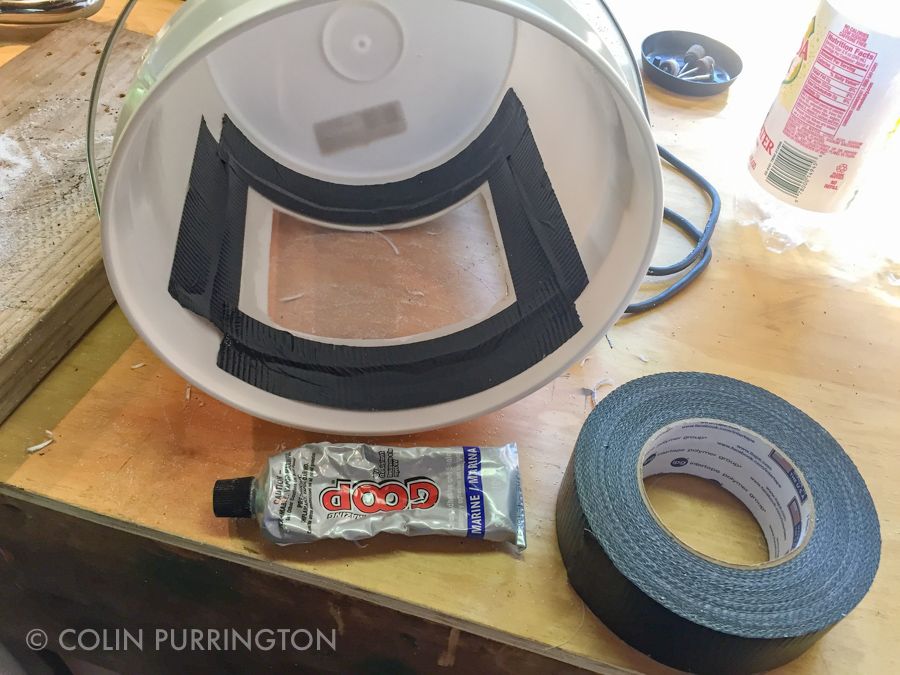
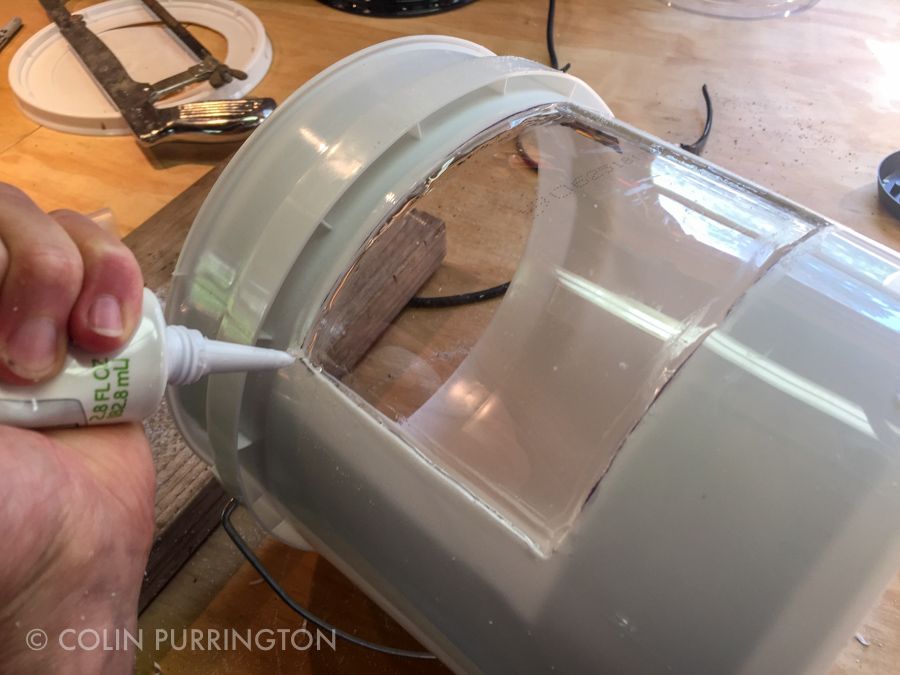
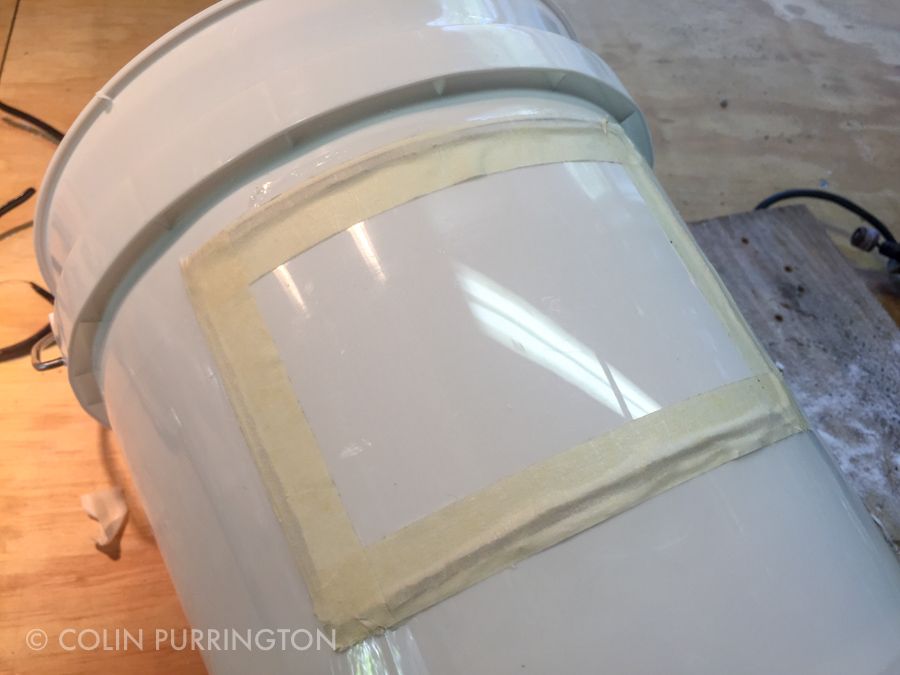
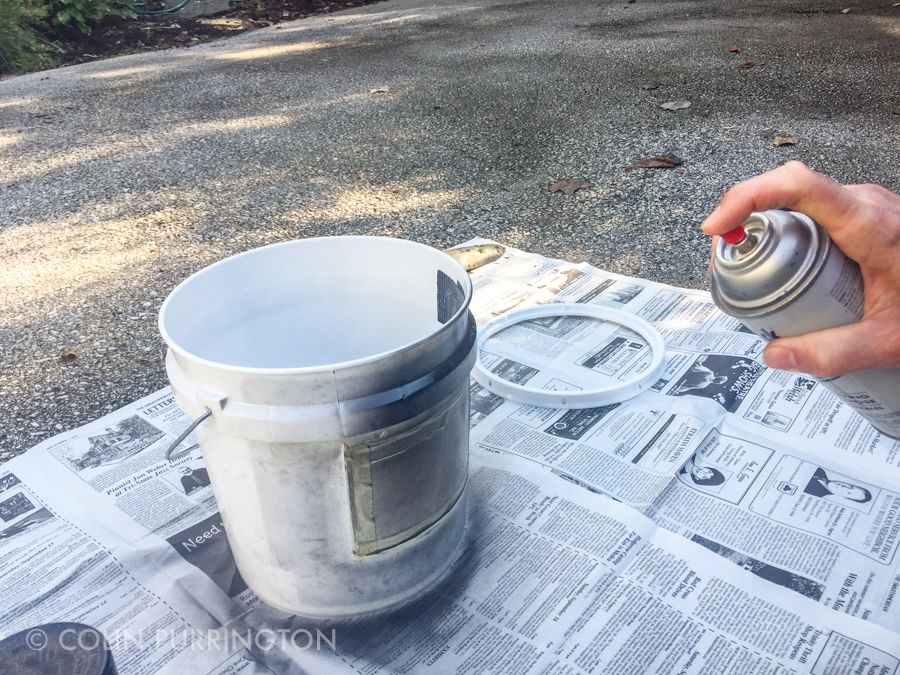
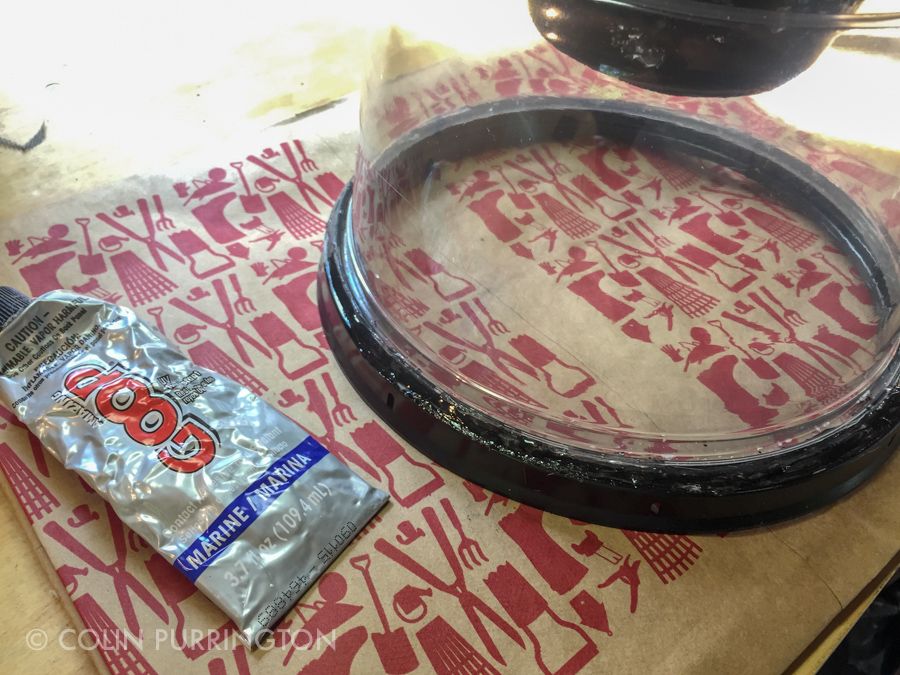
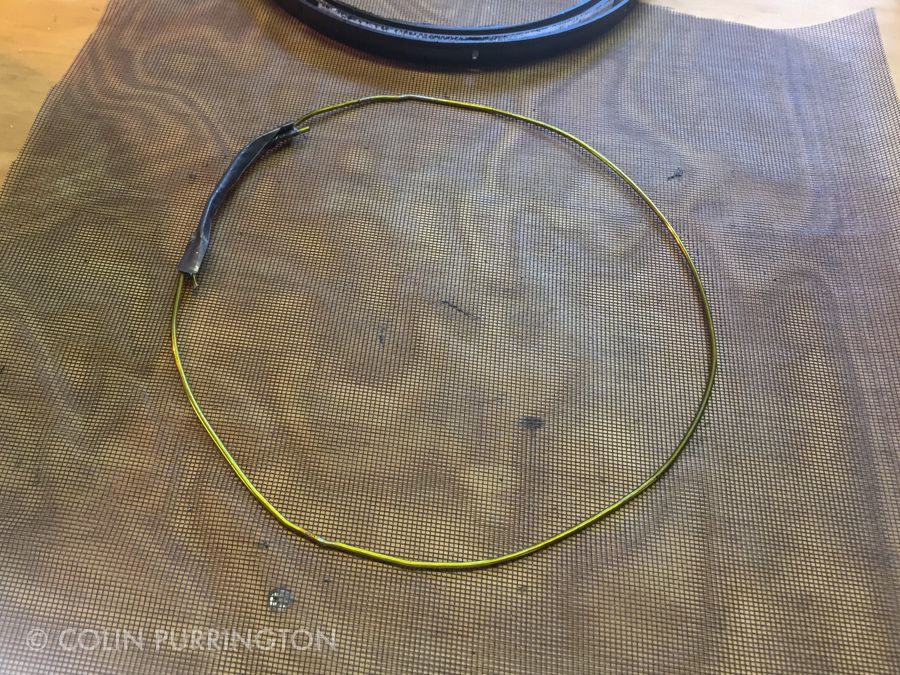
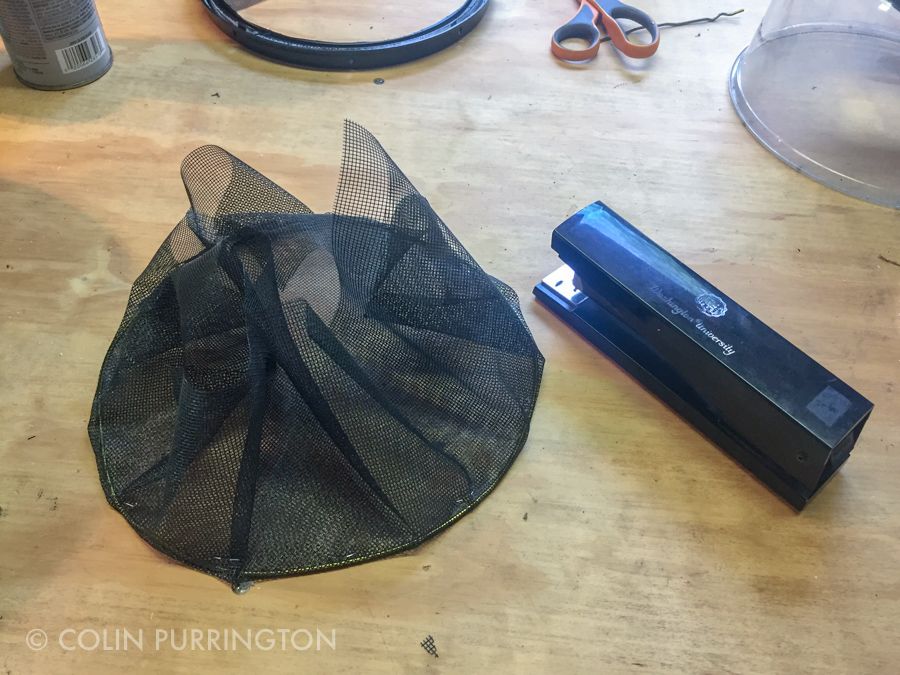
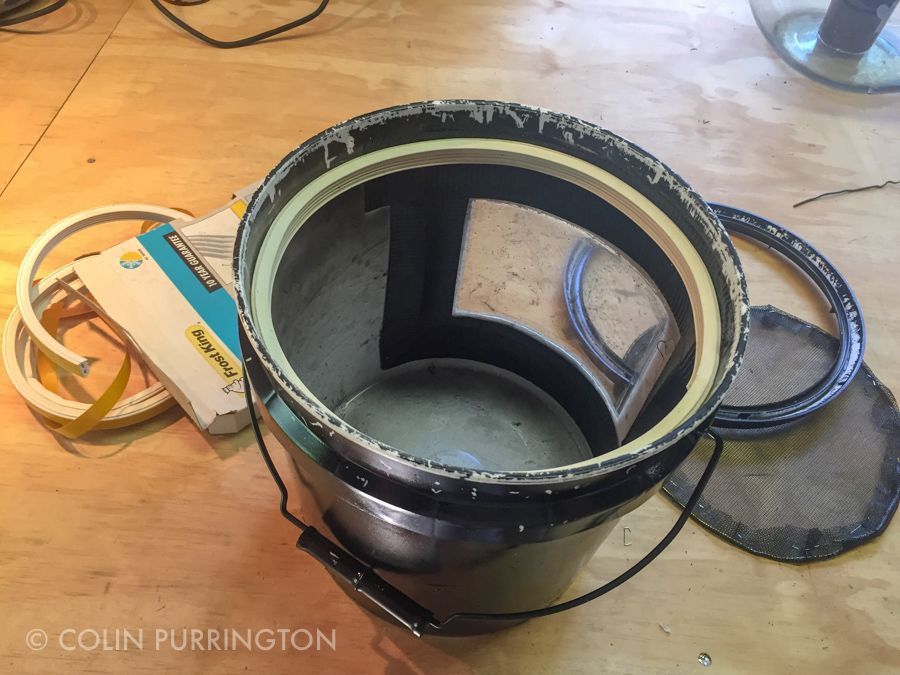
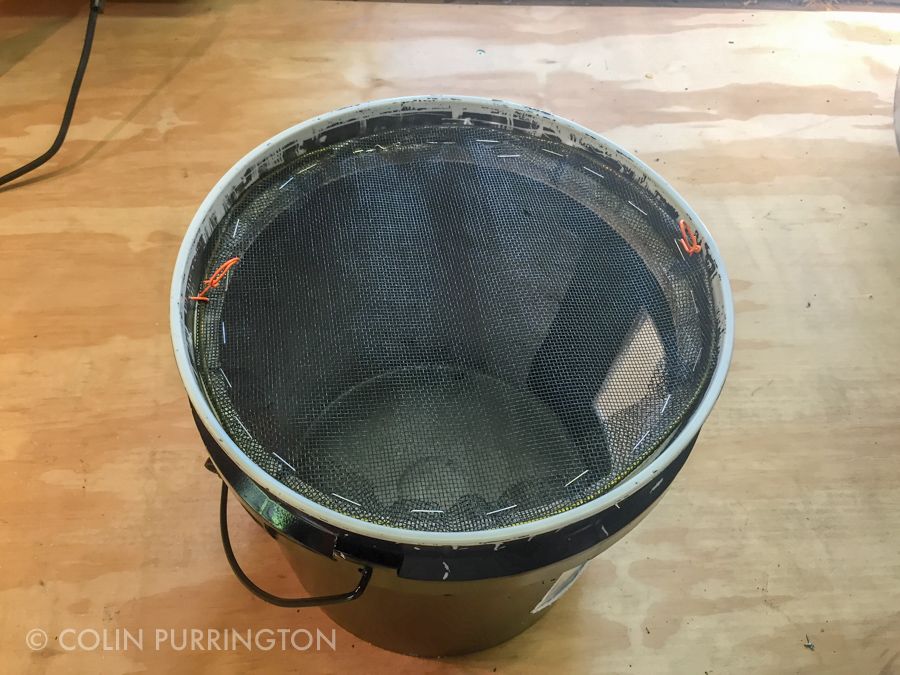
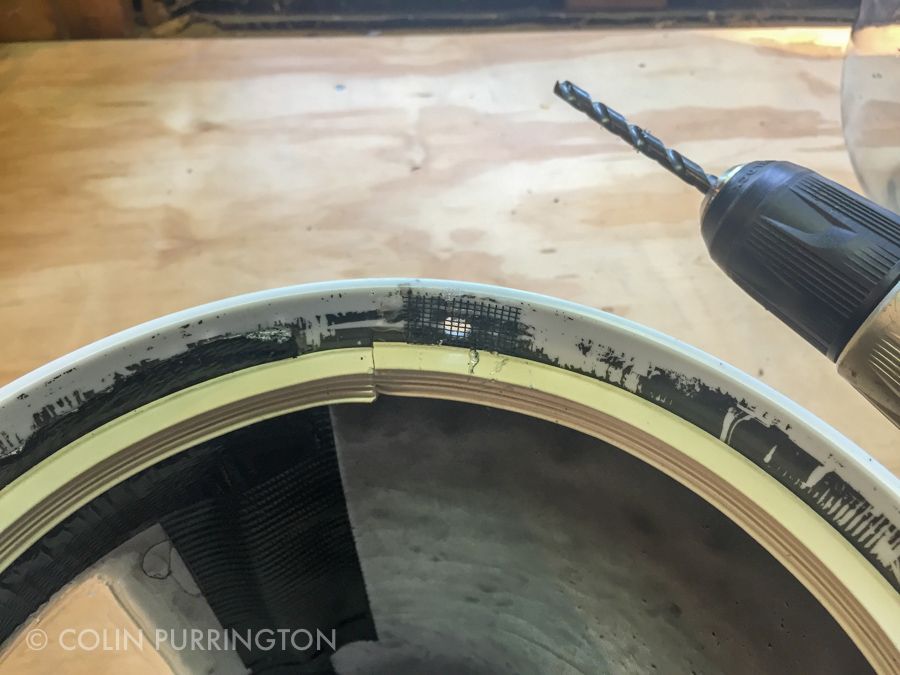
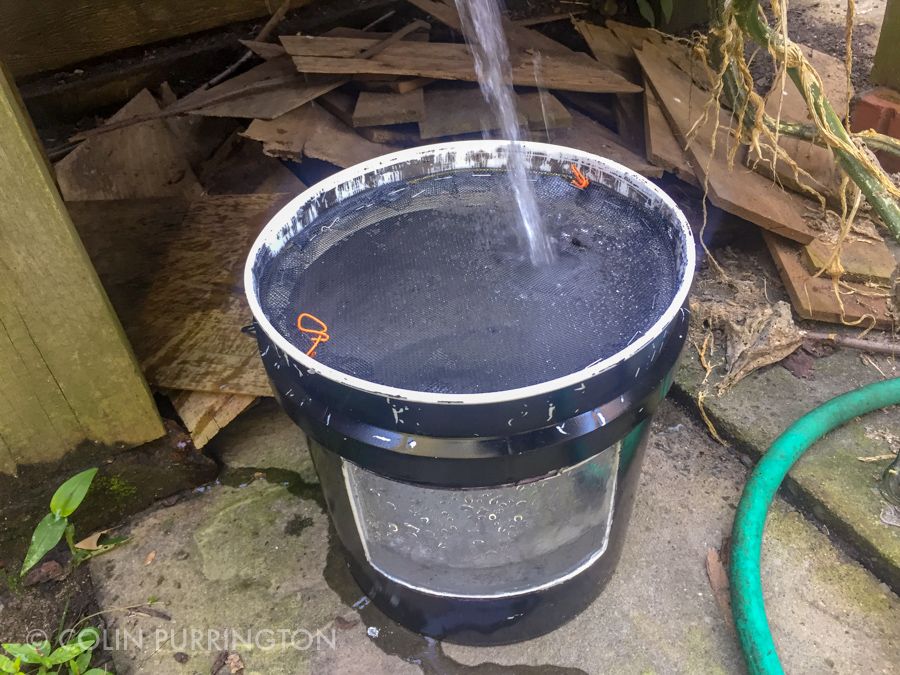
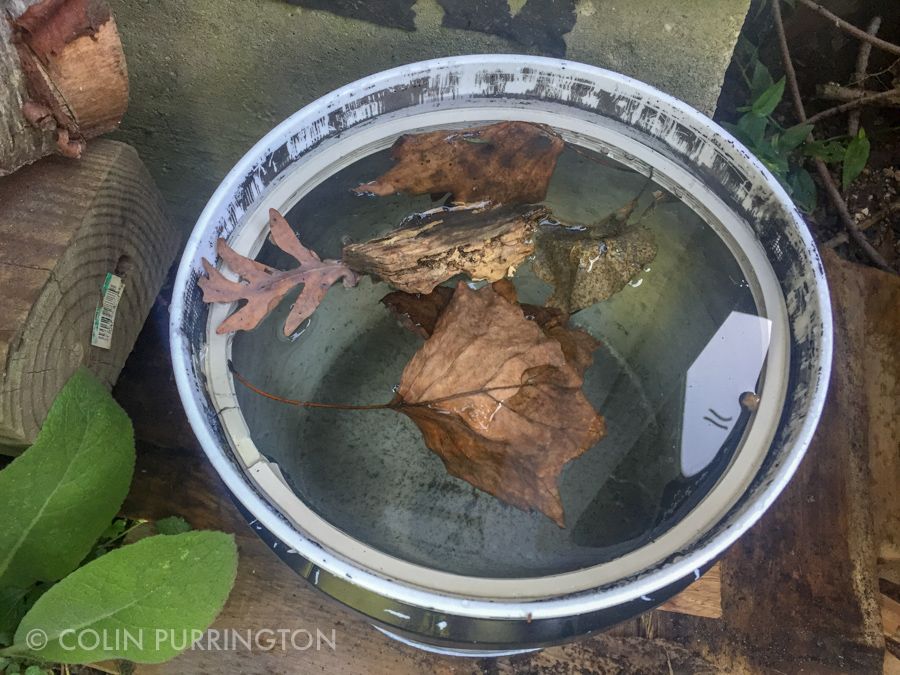
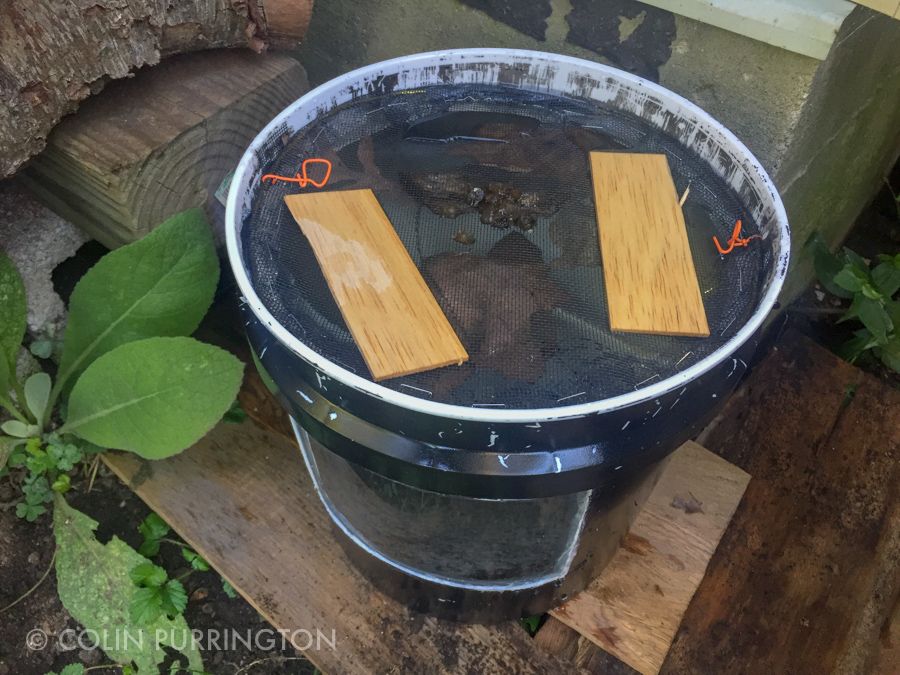
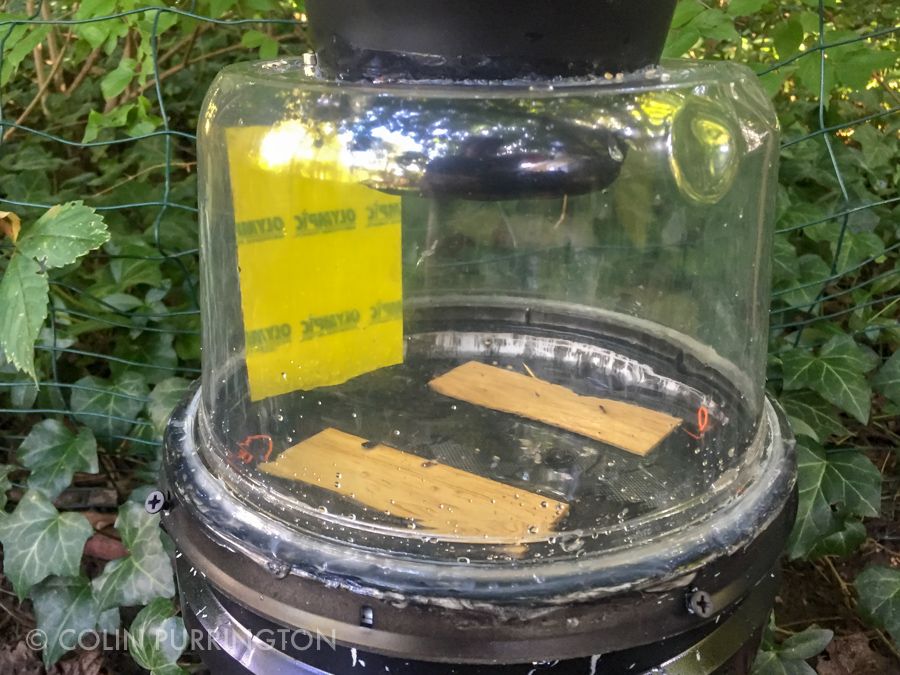
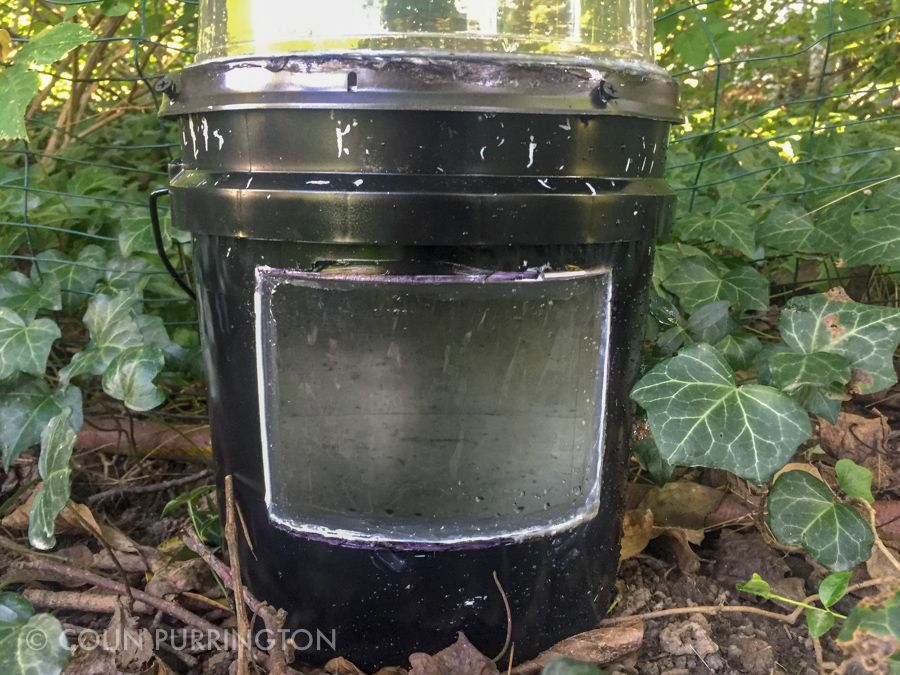
Well??? How did it go?
It worked! I bought four traps from two commercial outfits and my DIY one caught more mosquitoes. I have no sample size to assess why, though, so it could be just where I happened to position the traps.
What are the magnets for? I can’t see them in any photos.
I use a paperclip to hang the yellow sticky cards, so the magnet glued to the top of the dome allows me to easily detach the card. Commercial varieties have a hook for the hole in the sticky card. That works, too. But I love these magnets.
Thanks for posting this – brilliant! With all of my home time on these Covid-19 weekends, I intend to make one (and hopefully several more assuming that one works and isn’t too painful).
Have you made any modifications or do you have any suggested improvements to the DIY method described above?
The gasket that kept the internal screen eventually fell off, so now it’s just a normal trap. I.e., mosquitoes can’t actually oviposit on the surface of the water. I’m thinking about a better way to make this possible. If you come up with something, please let me know. The advantage would be that trap might be dramatically more attractive to certain species of mosquitoes that lay rafts onto water. That’s just a guess.
What hole size is the hardware cloth? 1/4″ or 1/2″? It seems smaller the better as long as the mosquitoes will still go through it.
Have you considered using actual plastic funnels? They seem pretty cheap and are ready-made. I was looking at the following, assuming 0.4″ at the bottom isn’t too narrow.
Karcy Mini Funnels for Filling Transparent 75ml Pack of 10 https://www.amazon.com/dp/B083TQJH63/
How much below the surface of the water line should the plastic screening be?
I haven’t built this yet but I did see this in the description, seems the screen is at water level to keep them from getting out:
“…progeny also die because a screen at water level prevents larvae from reaching the surface to obtain oxygen”
Have you considered using a ready-made funnel in the apparatus? I had been looking at something like this but don’t know if 0.4″ would be enough to allow mosquitoes to pass.
Karcy Mini Funnel, Transparent 75ml Pack of 10
https://www.amazon.com/dp/B083TQJH63/
Or these, 0.6″ (apparent) internal diameter.
https://www.amazon.com/Multi-Purpose-Plastic-Funnels-Reaching-Transfer/dp/B07K218VHR/
As for the screening material, how much below the surface of the water should it be?
Also, what size hole should the screening material have? Do the eggs pass through one direction while the larvae and pupae are prevented from returning?
Hey Collin, you should update this article with your results and updates to the design.
Yes, please update this article and let everyone know how it worked and if you made an improvements to the trap. Also how many traps did you need to lower the mosquitoes that were bitting you? Thanks.
Would love to see more detail on how to build. I’m considering either this or the AGO-B from this article: https://parasitesandvectors.biomedcentral.com/articles/10.1186/1756-3305-6-225
On this one I’m unclear what silica gel is used for/where it’s used (it’s not in the list of components) and as noted, where/how the mesh screen is placed. Do the wood pieces sit on the mesh screen? The water level is going to change with evaporation.
I wish that paper had photographs of AGO-B. I’m not 100% sure what they’ve done. Silica gel absorbs water and can swell, so perhaps it’s an attractive oviposition substrate. I’d considered using it for that, at least.
And, yes, the wood piece was resting on top of the mesh and I tried to keep the water level high so that the wood was floating and hydrated. Some species insist on sensing wet substrate before ovipositing, so I was hoping to replicate that. I’m not sure how effective it is, or even needed. I.e., females entering the trap were trapped … so it didn’t really matter whether they found a good place for eggs. It was, as you say, a problem that evaporation changed the water level.
I’d be interested in what you end up with. Please stay in touch. Good luck!
Does it catch things you’d rather not catch? Like very tiny wasps or other beneficials?
It doesn’t trap many things, but small midges show up sometimes.
Were you able to catch and see larval development in this trap?
Yup!
Any 2023 updates to your trap? Did you catch many adult mosquitoes in there? If yes, I assume they got exhausted and eventually drowned?
No updates!
Thanks for iterating on this design! Any changes since the last update?
Looks like https://www.makemosquitotraps.org is dead (must have expired and got hijacked).
I haven’t revisited this trap but sure would like to. What I need is a simpler design so that it’s easier to make 10 in an afternoon.
100% – that would be great. The fully passive design is very clever.
I also like the design with the simple bucket, 6″ hole in the top, semi-submerged (for capillary action) stick with permethrin (enough to kill but not to scare) and BTI|boric acid in the water as larvicide; the “4 month trap” from Eden. What I like about it is, as you say, it’s easy for someone to crank out a bunch. I don’t love the chemicals, but I hate mosquitoes more!